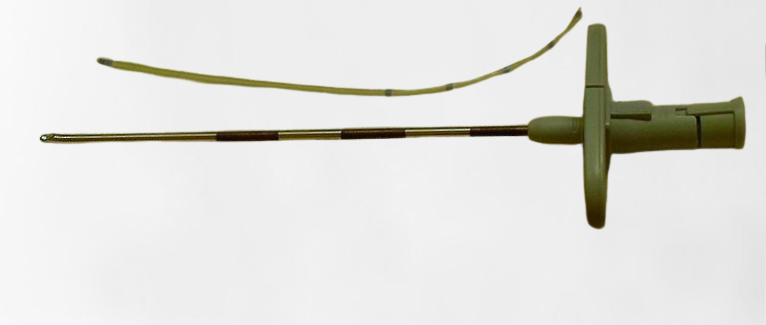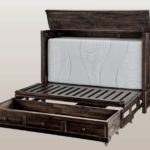An indispensable instrument in medicine for a variety of invasive operations is epidural needles. An epidural needle’ size influences how safe it is to use on patients and what kinds of tasks it can accomplish. The several kinds of epidural needles that are available will be discussed in this article, along with how to use them safely and effectively.
To guarantee patient safety, we will also go over selecting the appropriate size epidural needle for a particular procedure. Armed with this knowledge, you can make sure that your medical practice is utilizing the most significant resources for treatments that are both effective and safe.
Contents
What is an epidural needle?
Epidural needles are specialized medical instruments intended to inject drugs into the epidural space, including anesthetics. This small space between the vertebrae in the spine encircles the spinal cord. Compared to other medical needles, epidurals are very short, measuring about 4-6 cm. Because they have a great gauge, giving medication will also be as comfortable as possible.
Depending on the kind of treatment being administered, epidural needles can be used for several things. Examples include delivering pain relief during labor and delivery or dealing with ongoing pain issues. Patients’ well-being is always kept in mind during the production of epidural needles.
The size and shape of the epidural needle will be adapted to the specific treatment being administered. The lower danger of pain and the exact fabrication of these newer needles make them perfect for giving medications to specific organs.
Selecting the right epidural needle requires significant consideration by surgeons specializing in a particular operation. The patient’s preferences should be considered when selecting a size because a broad range of comfort and precision can be achieved depending on the size. Specific protocols must be followed while employing this technology to ensure the highest level of safety for physicians and patients.
An epidural needle is a painless and safe approach for patients undergoing invasive operations or getting therapy for chronic pain to receive drugs straight into their bodies. Medical professionals may guarantee their patients’ health and safety and deliver the best care possible by learning to use and become skilled with these technologies.
Common types of epidural needles
- Different sizes and shapes are used to create epidural needles, each with a distinct purpose. Most epidural needles have a tip that is either straight or curved. Needles with sharp, pointy points are used to penetrate the skin during injection administration.
- Round-tipped needles may be easier to insert precisely and less likely to rip adjacent tissues. Additionally, plastic or stainless steel, which have high corrosion resistance in clinical conditions, are used to create epidural needles.
- The patient’s comfort and safety should be considered when selecting the needle size for surgery. When doing a minimally invasive procedure, like a nerve block or local anesthetic injection, it is advised to use a needlestick with a gauge size of 18 to 25.
- However, for more complex treatments like epidural or spinal anesthetic injections, needles with diameters between 17 and 22 are frequently utilized since they may pierce more deeply into the tissue without causing the patient undue pain.
- The added accuracy provided by a curved-tip needle is advantageous for treatments involving the spine or other internal organs. The beautifully crafted curved tips of the needle allow for more precise placement, potentially mitigating tissue injury and enhancing patient comfort.
- The patient’s health comes first in any procedure that uses an epidural needle. Wearing protective clothing (such as gloves or a face mask), exercising caution when inserting the needle into delicate tissue (such as that near nerves or vessels), closely monitoring fluid intake if the medicine is being injected via an epidural catheter, and not pushing the needle too far to prevent accidental injury are just a few of the safety precautions that must be taken.
Picking the right size epidural needle for your procedure
The comfort and safety of the patient during surgery depend on the choice of an appropriately sized epidural needle. The diameters of available epidural needles must be known to select the optimal substitute for a particular surgical procedure. Even in cases where a needle’s overall size is more significant, longer needles are linked to higher gauge values. When treating tissues, it is safer to use smaller needles. Needles usually weigh 18–25 grams.
The patient’s anatomy and specific needs must be considered while selecting the size of an epidural needle. Essential details include potential risks and the depth at which specific needle sizes can be employed.
The likelihood that a giant needle will puncture a nerve or other delicate tissue at the injection site and perhaps harm the nerve increases. It has been demonstrated that using smaller needles lowers these risks. Hence, smaller needles are frequently used.
Depending on the surgical technique, medical professionals, including anesthesiologists, may need to be consulted when selecting the appropriate needle size. The ideal persons to consult when choosing which type of epidural needle to use are anesthesiologists because they are highly qualified and experienced in both providing anesthesia and treating pain.
Using the proper size needle for an epidural injection is essential to keeping your patient safe and pain-free. Consider the patient’s unique requirements and physical state before drawing any judgments. If you feel that seeing a doctor is required, do so. When scheduling the procedure, consider this to ensure your patients have the most comfortable epidural therapy experience possible.
Safety tips for working with epidural needles
- Using an epidural needle requires full attention and quick reflexes. It is crucial to put in place appropriate precautions as a result. It’s crucial to observe these safety precautions when administering epidurals:
- Wear protective glasses and gloves as a precaution: Throughout the procedure, wearing gloves and safety glasses will protect you from needle sticking and accidental fluid spillage. To avoid cross-contamination, gloves should be changed after handling each patient.
- Techniques for disposing of old needles safely and properly Dispose of used epidural injection needles as quickly as possible by placing them in a container that can withstand punctures. This lessens the likelihood of needle sticking or dangerous substance interaction occurring by accident.
- Find out where you are in the world: Epidural needles must be kept securely in their holders during treatments. Incorrectly inserted needles pose a greater risk of injury to both patients and medical personnel.
- Consult the manufacturer’s directions at all times. Before using epidural needles, make sure you have carefully read the instructions, as you should with any medical equipment. By doing this, you can guarantee appropriate application and lower the hazards of negligent handling.
- Learn about the kind of needle being used. To ensure the health and safety of your patients, you must be familiar with the needles you will be using. Since more significant needle sizes (17G-22G) are needed for spinal anesthesia and epidural injections, these treatments are frequently reserved for more challenging surgical procedures.
- Most procedures can be performed with smaller needles (18-25 G) since they cause less tissue injury. Finding the right incision size and type for a given treatment can reduce complications and boost results.
- Patients need not worry about being hurt when epidural needles are utilized. While lowering the hazards associated with improper handling practices, taking the required safety precautions, and knowing about the various types of needles, their applications, and the ideal size for each therapy can improve patient outcomes.
Conclusion: Epidural Needle Size: Types-&-working-tips
Epidural needle specialized needles have become a vital component of contemporary medicine. Considerations such as needle size, kind, and specific handling instructions should be made before selecting a needle for surgery.
A precise selection of needle size is necessary; it should range from 17 to 22 g for more involved treatments such as epidurals or spinal anesthesia injections and from 18 to 25 g for little tissue disturbance.
In scarce situations, a curved-tip needle might be needed. When using this equipment, the patient’s safety and the best possible results depend on wearing protective gloves and glasses and paying close attention to the manufacturer’s instructions.
Medical personnel must strictly adhere to all applicable safety regulations and be knowledgeable about the numerous types of epidural needles available to ensure their patients’ success and safety.










